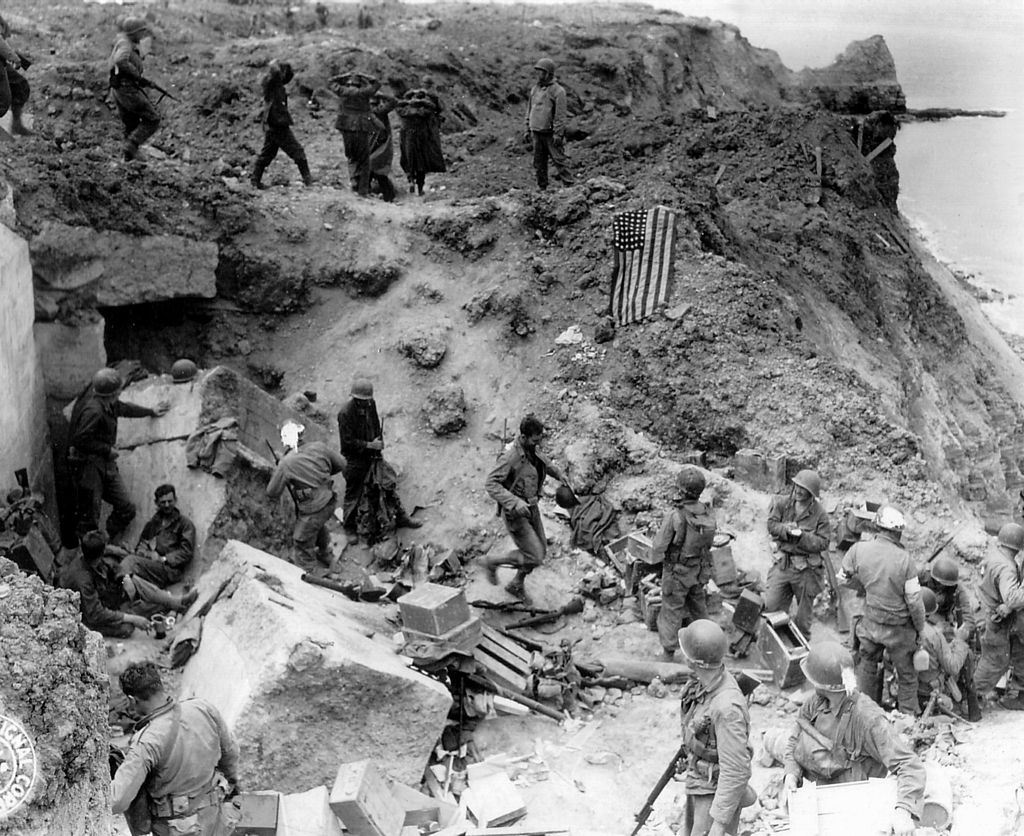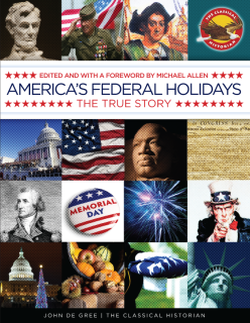 This image is of Pointe du Hoc, a 100 foot cliff taken by Americans on D Day. Memorial Day is a federal holiday set aside to honor all American soldiers who have fallen in battle. In 1967, Congress and President Lyndon Johnson set aside May 30th as Memorial Day, but the history of this day goes back at least to the end of the American Civil War. Americans remember our fallen soldiers by attending church services and praying for military families, visiting war museums, and remembering loved ones who died fighting by placing flowers on graves of deceased American warriors. More Americans died in the American Civil War than in all other American wars. An estimated 625,000 American soldiers died, including about 30% of all Southern white males and 10 percent of Northern males ages 20-45. Nearly every American knew someone who died. The sheer numbers of death and casualties in America had a great impact on the living, and immediately, Americans spontaneously acted to honor those who gave their lives. In the South and in the North, Americans strove to honor those who died fighting for their country. The United States government established national cemeteries for the Union dead. But what started the practice of Memorial Day was not an official governmental act, but thousands of individual acts of tenderness and care that survivors showed to the graves of fallen soldiers of the Civil War. Communities held “Decoration Days,” where everyone would walk to the cemetery to decorate the gravestones of the dead soldiers. One of the first known observances of a mass Decoration Day was in Charleston, South Carolina, on May 1, 1865. 257 Union prisoners had died during the war in a Charleston war prison and had been buried there. Freed slaves, along with missionaries and others, organized a celebration in May. Some in the North have called this the “First Decoration Day.” On this day, more than 10,000 people, including 3,000 newly freed children, participated. Throughout the late 1800s and early 1900s, the American Army, the U.S. government, and individual states celebrated Decoration Day, usually on May 30th, a date chosen because no great battle fell on this day. In 1967, Memorial Day became an official holiday, originally set to May 30th. In 1968, Congress pass a law which moved four holidays to the closest Monday to create convenient three-day weekends. Unfortunately, this move has caused most Americans to view holidays such as Memorial Day as an opportunity for mere recreation, instead of trying to honor our fallen soldiers. On June 6, 1984, on the fortieth anniversary of D-Day, President Ronald Reagan gave a speech in front of the U.S. Ranger Monument at Normandy, commemorating the Rangers’ charge up Pointe du Hoc. “Forty summers have passed since the battle that you fought here. You were young the day you took these cliffs; some of you were hardly more than boys, with the deepest joys of life before you. Yet, you risked everything here. Why? Why did you do it? What impelled you to put aside the instinct for self-preservation and risk your lives to take these cliffs? What inspired all the men of the armies that met here? We look at you, and somehow we know the answer. It was faith and belief; it was loyalty and love. The men of Normandy had faith that what they were doing was right, faith that they fought for all humanity, faith that a just God would grant them mercy on this beachhead or on the next. It was the deep knowledge – and pray God we have not lost it – that there is a profound, moral difference between the use of force for liberation and the use of force for conquest. You were here to liberate, not to conquer, and so you and those others did not doubt your cause. And you were right not to doubt. You all knew that some things are worth dying for. One’s country is worth dying for, and democracy is worth dying for, because it’s the most deeply honorable form of government ever devised by man. All of you loved liberty.” Below are listed all American military deaths that occurred because of the various wars of the United States of America. Conflict Deaths Span American Revolution 25,000 1775-1783 Northwest Indian War 1,056 1785-1795 Quasi-War 514 1798-1800 War of 1812 20,000 1812-1815 1st Seminole War 36 1817-1818 Black Hawk War 305 1832 2nd Seminole War 1,535 1835-1842 Mexican-American War 13,283 1846-1848 3rd Seminole War 26 1855-1858 Civil War 625,000 1861-1865 Indian Wars 919 1865-1898 Great Sioux War 314 1875-1877 Spanish-America War 2,446 1898 Philippine-American War 4,196 1898-1913 Boxer Rebellion 131 1900-1901 Mexican Revolution 35 1914-1919 Haiti Occupation 148 1915-1934 World War 1 116,516 1917-1918 North Russia Campaign 424 1918-1920 American Exped. Force Siberia 328 1918-1920 Nicaragua Occupation 48 1927-1933 World War 2 405,399 1941-1945 Korean War 36,516 1950-1953 Vietnam War 58,209 1955-1975 El Salvador Civil War 37 1980-1992 Beirut 266 1982-1984 Grenada 19 1983 Panama 40 1989 Persian Gulf War 258 1990-1991 Operation Provide Comfort 19 1991-1996 Somalia Intervention 43 1992-1995 Bosnia 12 1995-2004 NATO Air Campaign Yugoslavia 20 1999 The War on Terror a. Afghanistan (ongoing) 2,145 2001- b. Iraq 4,486 2003-2011 Great Discussion Questions You Can Ask Your Kids 1. Order the five most dangerous American wars, in terms of American deaths. 2. After which war did Americans begin to celebrate Decoration Day? 3. When was Memorial Day officially established as a federal holiday? 4. Why was Memorial Day originally called Decoration Day? 5. Why do you think it is important to honor America’s fallen soldiers? 6. What has been America’s longest war? 7. Which of America’s wars has caused the most deaths? 8. According to President Ronald Reagan, what were the reasons the American soldiers fought for? 9. In the Civil War, which side lost more of the men, as a percentage of the whole society? 10. According to Reagan, what did American soldiers on the beaches of Normandy have a deep knowledge of? By John De Gree of www.classicalhistorian.com Copyright 2016. All Rights Reserved. #theclassicalhistorian  This lesson was taken from America's Federal Holidays, The True Story, by John De Gree of Classical Historian. Click Here for More Details.
1 Comment
Russell Person
5/23/2019 08:20:20 am
Nice and very well presented. The numbers for the civil war have been updated to approximately 750,000 men in uniform, with approximately 22% of southern men dying from battle and disease. 350,000 to upwards of a million Southern civilians also died due to the actions of the federal forces.
Reply
Leave a Reply. |
John De GreeJohn De Gree writes the current events with a look at the history of each topic. Articles are written for the young person, aged 10-18, and Mr. De Gree carefully writes so that all readers can understand the event. The perspective the current events are written in is Judeo-Christian. Receive Articles and Coupons in Your EmailSign Up Now
For Email Marketing you can trust. Archives
June 2024
Categories
All
|
|
SUPPORT
|
RESOURCES
|
|


 RSS Feed
RSS Feed



